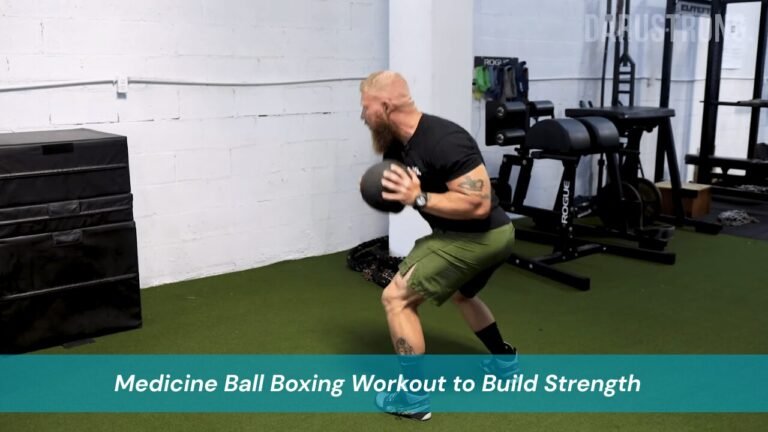Boxing has evolved from being just a competitive sport into one of the most effective ways to train the body and mind. A well-structured boxing workout routine blends cardio, strength, and skill practice into a powerful session that challenges every major muscle group. Whether your goal is to burn fat, gain confidence, or improve overall fitness, boxing offers a dynamic and engaging approach to training.
If you’ve ever stepped into a boxing gym, you know it’s more than just throwing punches. From skipping rope and working the heavy bag to practicing footwork and core drills, boxing engages the entire body. Let’s break down what makes boxing such a versatile and effective workout, and how you can create a routine that works for your fitness level.
Why Choose a Boxing Workout Routine?
Unlike repetitive gym sessions or long-distance cardio, boxing keeps you moving in unpredictable ways. Every workout blends bursts of explosive energy with controlled endurance, creating a full-body experience.
One of the main reasons boxing is so effective is calorie burn. Research shows that a single hour of moderate-to-high intensity boxing can burn anywhere from 500 to 800 calories. That’s significantly higher than most steady-state cardio workouts. Over time, this leads to noticeable weight loss and increased lean muscle definition.
Boxing Workout Routine also builds cardiovascular health. With constant movement, your heart and lungs are pushed to work harder, improving aerobic capacity while also enhancing anaerobic endurance. This means not only will you perform better during workouts, but you’ll also notice more stamina in everyday activities.
Another unique benefit is the way boxing develops functional strength. Punching is a full-body movement powered by the legs, core, and shoulders working together. Unlike isolated strength exercises, this kind of training enhances balance, coordination, and mobility. On top of that, boxing can be a stress reliever. Many people find that hitting the heavy bag clears the mind, reduces anxiety, and improves mental focus.
Key Components of Training
To experience all these benefits, a boxing session should be broken down into clear stages: warming up, skill practice, bag work, conditioning, and recovery. Each stage builds on the last to create a complete workout.
Warming Up
The warm-up phase is essential for preparing the body. Many boxers start with three to five minutes of jump rope to raise the heart rate and improve coordination. This is often followed by dynamic stretches like arm swings, torso rotations, and hip mobility drills. To finish the warm-up, shadowboxing allows you to practice punches lightly while getting into the rhythm of movement.
Technical Practice
Next comes skill development. Beginners usually focus on the four fundamental punches: jab, cross, hook, and uppercut. These moves are practiced through shadowboxing, mitt work, or light bag drills. Alongside offense, defensive skills such as slipping punches, rolling under hooks, or parrying jabs are equally important.
Footwork drills are also part of this stage. Learning to pivot, shuffle sideways, and step in or out improves agility and keeps you balanced. With consistent practice, these skills build not only boxing ability but also general athletic coordination.
Heavy Bag Rounds
The heavy bag is where you bring everything together. Training typically follows a three-minute round structure, similar to real matches. During these rounds, you might alternate between short bursts of powerful punches and longer stretches of fast, lighter combinations.
The heavy bag strengthens the shoulders, improves endurance, and helps develop rhythm. Adding in defensive movements after combinations makes the practice more realistic and engages additional muscles. Over time, heavy bag training improves both power and stamina.
Conditioning
While boxing itself is physically demanding, additional conditioning helps round out performance. Push-ups, squats, and lunges build strength and muscular endurance. Core exercises such as planks, Russian twists, and leg raises reinforce stability, which is crucial for generating powerful punches. Some boxers also use medicine ball throws or battle ropes to mimic explosive striking power.
Recovery
Every workout should end with recovery work. Static stretches for the shoulders, hamstrings, and hips prevent stiffness and promote flexibility. Foam rolling or light mobility exercises help muscles relax, while deep breathing lowers the heart rate. This stage may seem small, but it’s key for long-term progress and injury prevention.
A Sample 45-Minute Session
A balanced workout might start with a five-minute warm-up of skipping rope, stretching, and light shadowboxing. From there, spend about 15 minutes practicing combinations, footwork, and defensive drills. Transition into three three-minute rounds on the heavy bag, using the one-minute rests to stay light on your feet. After the bag, move into a conditioning circuit—push-ups, bodyweight squats, and planks for about 10 minutes. Finally, finish with a cool-down of stretching and foam rolling.
This routine gives you skill practice, cardio, and strength training in under an hour, making it ideal for busy schedules.
Pro Tips for Better Results
Success in boxing comes from consistency and attention to detail. Always prioritize technique over raw power. Perfecting your form ensures efficiency and lowers the chance of injuries. Make sure to use hand wraps and gloves every time you hit the bag, as this protects the wrists and knuckles from strain.
Keep your workouts varied by mixing in different drills. For example, alternate between mitt work, shadowboxing, and sparring to keep training fresh. This variation challenges the body in new ways and prevents plateaus.
Finally, track your progress. Note how many rounds you complete, how long you last before fatigue, and how your technique improves. Small improvements over time will build both confidence and motivation.
FAQs
Can beginners start boxing workouts?
Yes. Beginners can start Boxing Workout Routine with simple shadowboxing, skipping rope, and bodyweight conditioning. As confidence grows, they can move to bag work and eventually sparring.
How often should I train?
For general fitness, two to three sessions per week are enough. Advanced boxers may train four to six times weekly, but recovery becomes even more important at that level.
Do I need equipment right away?
You can begin with shadowboxing and rope skipping, but gloves, wraps, and access to a heavy bag will help take your training to the next stage.
Is boxing good for weight loss?
Absolutely. It’s one of the best workouts for burning calories quickly, while also building lean muscle and improving cardiovascular endurance.
Can it replace traditional gym workouts?
Boxing provides both cardio and strength benefits, but combining it with weight training ensures a more complete fitness plan.
Conclusion
A boxing workout routine offers a unique blend of cardio, strength training, and skill development, making it one of the most complete workouts available. It challenges the body in ways traditional gym routines often don’t, while also providing mental benefits like stress relief and improved focus.
Whether you’re aiming for weight loss, better endurance, or simply a new challenge, boxing is adaptable for every level. The key is to stay consistent, practice good form, and listen to your body. If you’re ready to experience the benefits, consider visiting a local boxing gym or trying structured online sessions.
Visit boxing essential to explore more.




